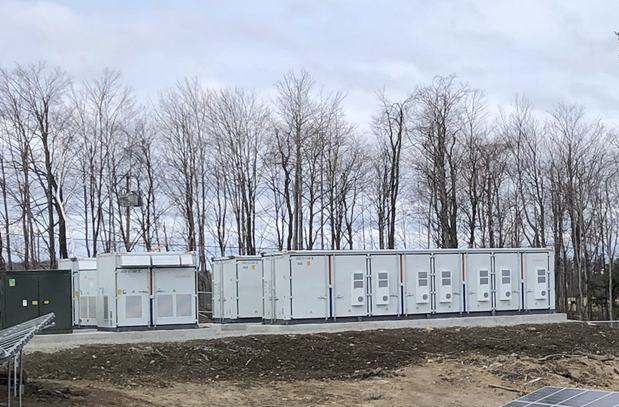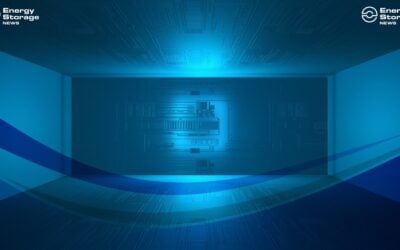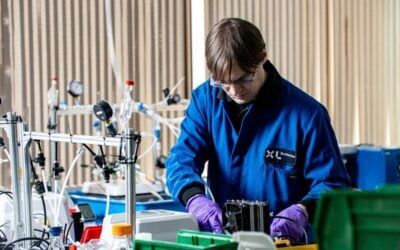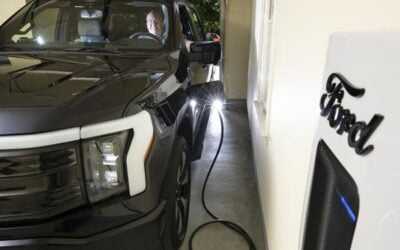
Stem Inc claimed to be on track to achieve its 2021 full year revenue guidance of US$147 million, after reporting a year-over-year increase in revenues of 245% for the first quarter ending 31 March.
The “artificial intelligence-driven clean energy storage services” provider mostly delivers energy storage hardware and software that businesses can use to lower their electricity costs, while Stem Inc can also leverage those systems to earn revenues from grid services or utility energy markets. Latterly it has also moved into the front-of-meter solar-plus-storage space, particularly in Massachusetts where the company commissioned a 9MWh battery system during the quarter.
Stem became a publicly-listed company on 29 April on the New York Stock Exchange (NYSE) following a business combination with special purpose acquisition company (SPAC) Star Peak. Financial results announced this week are for the first quarter 2021, meaning it is too early to see what sort of impact the transaction and subsequent listing — which the company has said could unlock around US$600 million — will make.
Stem Inc reported US$15.4 million of revenues for the quarter, compared to just US$4.1 million in the first quarter of 2020. The year-over-year increase was attributable to factors including higher revenues for delivering hardware to front-of-the-meter energy storage projects and higher services revenue from customers’ hosted systems.
Try Premium for just $1
- Full premium access for the first month at only $1
- Converts to an annual rate after 30 days unless cancelled
- Cancel anytime during the trial period
Premium Benefits
- Expert industry analysis and interviews
- Digital access to PV Tech Power journal
- Exclusive event discounts
Or get the full Premium subscription right away
Or continue reading this article for free
It now has 1.1GWh of contracted assets under management, including 345MWh of battery storage assets in California into which Stem’s software platform was deployed towards the end of last year. The company’s contracted backlog increased significantly during the quarter, from US$184 million at the end of 2020 to US$221 million. Year-over-year, the growth in bookings is a 150% increase from Q1 2020, when it stood at US$20 million. Sales pipeline is US$1.43 billion.
However, as Energy-Storage.news reported back in March, the company acknowledges that the path ahead to profitability will stretch out a while longer, likely until early 2023. Its adjusted EBITDA for Q1 2021 was US$-4.1 million, which is an improvement on US$-9.7 million EBITDA for Q1 2020 and gross margin under GAAP was -1%, again an improvement on -34% in Q1 2020.
Owing to a revaluation of company warrants due to a rise in the underlying value of the company, a loss of US$82.6 million net was recorded for the quarter just gone, a big leap from US$17.5 million 2020 Q1 net loss, with the US$66 million non-cash charge for warrant revaluation making a big difference.
In its end of year 2020 results, the company had said that its 2020 revenues, at US$36.3 million, were almost double 2019’s US$17.55 million in revenues and the company said this time out that it expects 2021’s revenues to reach its guidance figure. It has guided that its EBITDA will be US$-25 million for the full year.
Stem CEO John Carrington described the first quarter results as “strong,” highlighting the growth in revenues, and similarly described gross margin and EBITDA performance.
“Our contracted backlog grew more than 20% sequentially, reflecting strong commercial momentum particularly in the Front of the Meter (“FTM”) segment and a quickly growing end market. Looking forward, our sales, product development and operations teams continue to drive toward achieving our 2021 guidance and building momentum into 2022 and beyond,” Carrington said.
“As the first publicly traded pure-play smart storage company, our experience, industry-leading software, robust service offerings, and strong balance sheet will continue to differentiate Stem in this rapidly expanding market.”
There have been some concerns across the energy storage industry that supply of battery cells and other key hardware and materials could become constrained in the near future. Previously, Stem Inc has spelled out how it needs a variety of suppliers to meet market requirements and already sources from a number of different OEMs.
As it reported its financial results, the company said that it has “contracted for sufficient supply chain commitments” to be able to meet its 2021 revenue goal, while it will continue to diversify supply chain, adopt alternative technologies use its balance sheet to meet “the significant growth in customer demand”.

![burns and mcdonnell GA_Battery_Storage_003[84] The maturing industry has allowed EPCs to "get more creative with engineering technology and construction equipment to help streamline operations in the field," Julian Hoover says. Image: Burns & McDonnell](https://www.energy-storage.news/wp-content/uploads/elementor/thumbs/burns-and-mcdonnell-GA_Battery_Storage_00384-rgklnp65oz5okwj4j525f5bdz9y57j338jh6zpqdvo.jpg)



